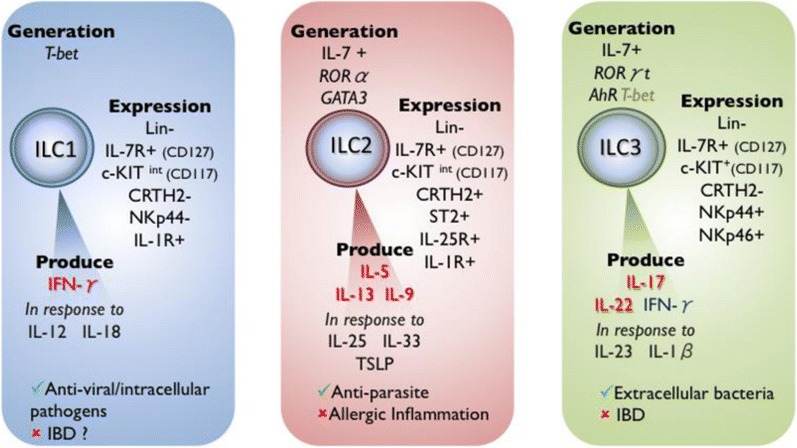Fig. 1.

Innate lymphoid cells. Three groups of non-cytotoxic lineage negative ILCs are defined as ILC1, ILC2, and ILC3. ILCs express the subunits of cytokine receptors such as interleukin (IL)-2 receptor-α (CD25) and IL-7 receptor-α (CD127) but do not express the somatically rearranged antigen receptors as T and B cells and lack antigen specificity. Thus exhibit functions in an antigen-independent manner. ILC1s produce IFN-γ in response to IL-12 and IL-18 providing immunity to intracellular bacteria and parasites. Whereas ILC2s are stimulated by IL-25, IL-33, or TSLP to produce Th2 cytokines such as IL-5, IL-13, and IL-9 causing allergic inflammation. ILC2s also provide immunity to helminths as well as tissue repair. The ILC3s are driven by IL-23, IL-1β to produce IL-17, IL-22, and IFN-γ, which promote immunity to extracellular bacteria and tissue repair.
